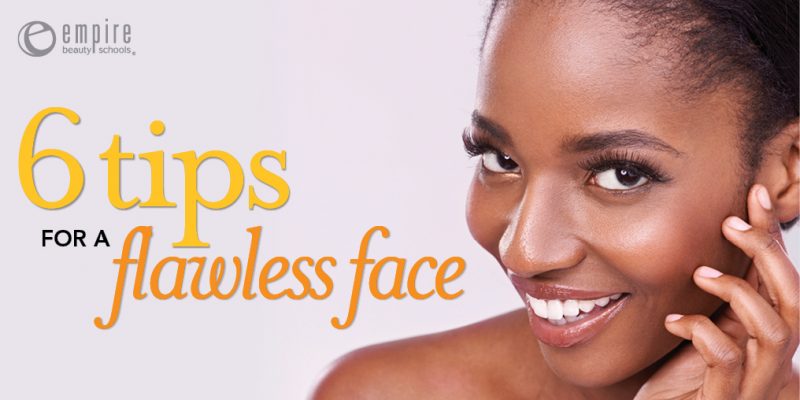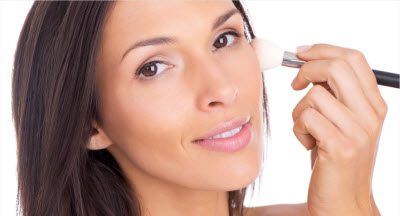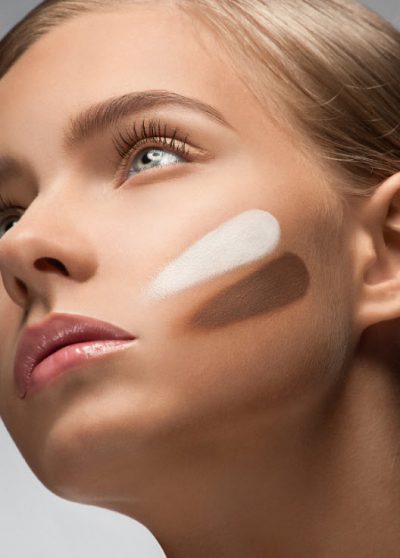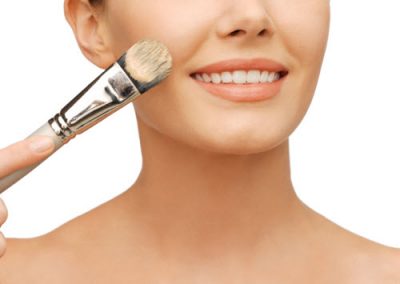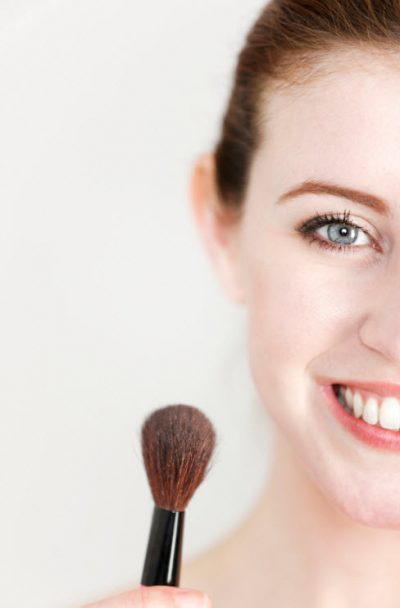6 Tips for a Flawless Face
Foundation is generally the largest portion of your makeup routine. But how many times have you seen someone with poorly blended foundation, and you couldn’t focus on anything else BUT that? If you want to make sure you’re never that person, follow the tips below and you’ll never worry again!
Tip 1: Prep Your Skin
Begin by applying a moisturizer and primer to create a flawless canvas. Then apply foundation with a brush or damp sponge. Blend by starting in the center of the face and work your way out to the hairline. Apply the product by dabbing, not brushing. If you use a brush, work in circular motions, because your pores are round this will help blend the product into the skin flawlessly. This also eliminates any lines along the forehead or jaw. Also, don’t forget to blend foundation into the neck for more realistic coverage. When looking for a foundation brush, make sure it’s synthetic, not animal hair (you should never use animal hair with liquids). You also have to wash the brush regularly with either a makeup brush cleaner or a gentle baby shampoo.
Tip 2: Liquid Foundation
Your powder foundation: Ditch it. Powder foundation can be a popular product. And yes, mineral makeup IS supposedly better for your skin (non-comedogenic, naturally anti-bacterial and with built-in sunscreen). The problem is that powder foundations don’t give you the most natural finish. The trend right now is very, very natural and a little bit dewy. The best way to get this look is with a liquid foundation. Powders are drying, tend to cake and can even accentuate wrinkles because they settle into the creases. Even with a primer, some with shimmer in them can even make your pores look larger.
Tip 3: Stop Testing on your Jawbone
You should actually test your foundation in three spots: underneath the eyes, on/around the nose and at the cheek/jawline. Do it all on one side of your face so you can compare with the no-makeup side. The perfect shade should pretty much disappear into your skin—but if in doubt, go slightly darker, not lighter. A slightly darker shade covers flaws a lot better and will warm up your skin tone. Remember, nobody wants a mismatched face and body tone.
Tip 4: Primer
Most people look 150 percent better with primer because it helps foundation glide on smoother and stay put longer. They’re making really clever ones lately that can also soften the appearance of wrinkles, control shine, or boost radiance. Some can be pricey, but a little goes a long way and will last awhile.
Tip 5: Stop Using Your Finger
The reason foundation brushes are superior is because they use far, far less product and are also perfect for blending—and that means a smoother, more natural, less cakey application. Sponges are okay but the problem is that they waste a lot of product. They tend to be better at dabbing on areas where you need more coverage.
Tip 6: Don’t Apply All Over Your Entire Face
The purpose of foundation is not, in fact, to cover up every square inch of your face—it’s really only supposed to be used on the areas where you need it. The redness around your nose/chin, the darkness underneath your eyes, the random rogue blemishes – these are the areas that you want to concentrate on applying your foundation.
Blend everything really well using your aforementioned foundation brush, and if you’ve selected the right shade, it should look seamless!!
The Extra Touches
Concealer: Remember, foundation first then concealer. Go in with a brush to dab it (a cream, not liquid) on top only where you need it. Then blend!
Setting foundation: If you want to “set” your foundation, invest in a colorless translucent powder. This will prevent that cakey texture from messing up your otherwise perfect makeup application. The point is that the look you want is dewy, not powdery! Only apply powder in the areas where you tend to get shiny: the forehead and maybe the chin. And contrary to what you may be thinking, don’t use a big, fluffy brush to apply because you’re going to deposit too much product. Instead, go for a domed, fluffy eyeshadow brush.
Oil-Blotting Papers: If you need to touch up during the day, invest in some handy oil-blotting papers. Get the kind that aren’t coated with powder, or you’re just going to end up back at square one.
Remember, your foundation is not something people should notice, it should look just like an improved version of your actual skin
